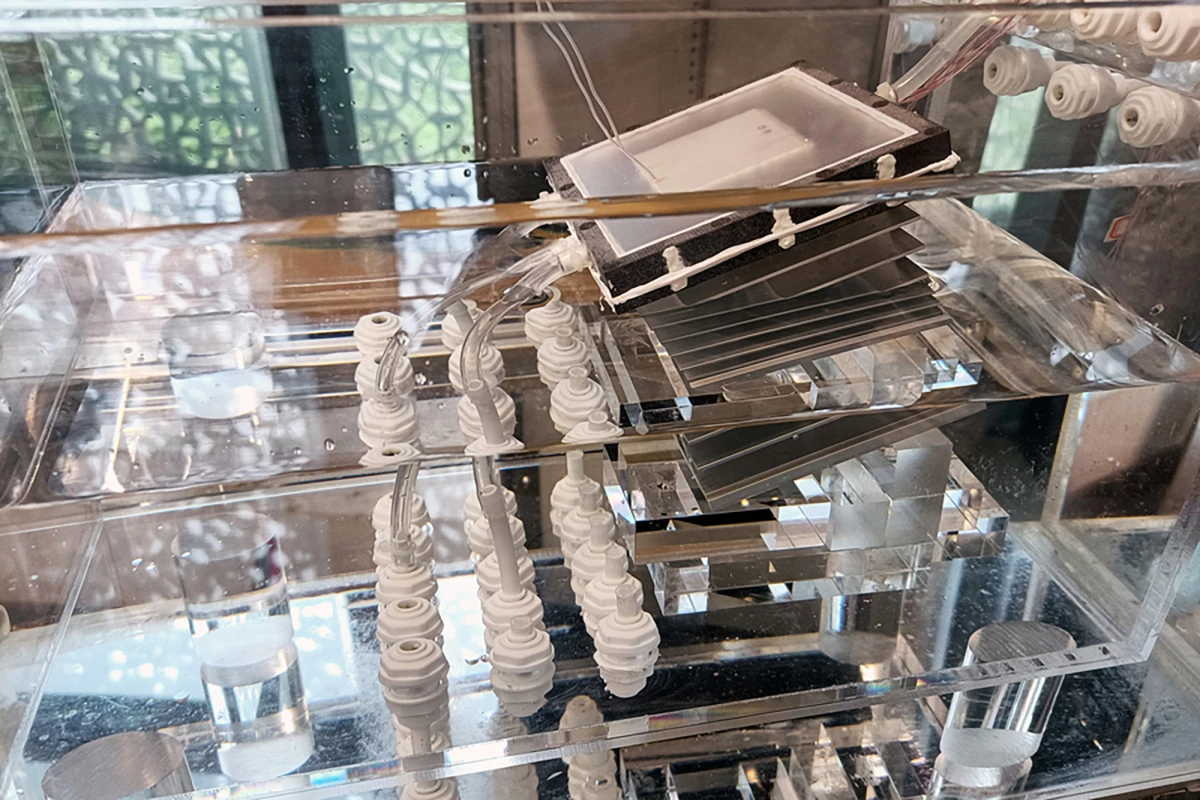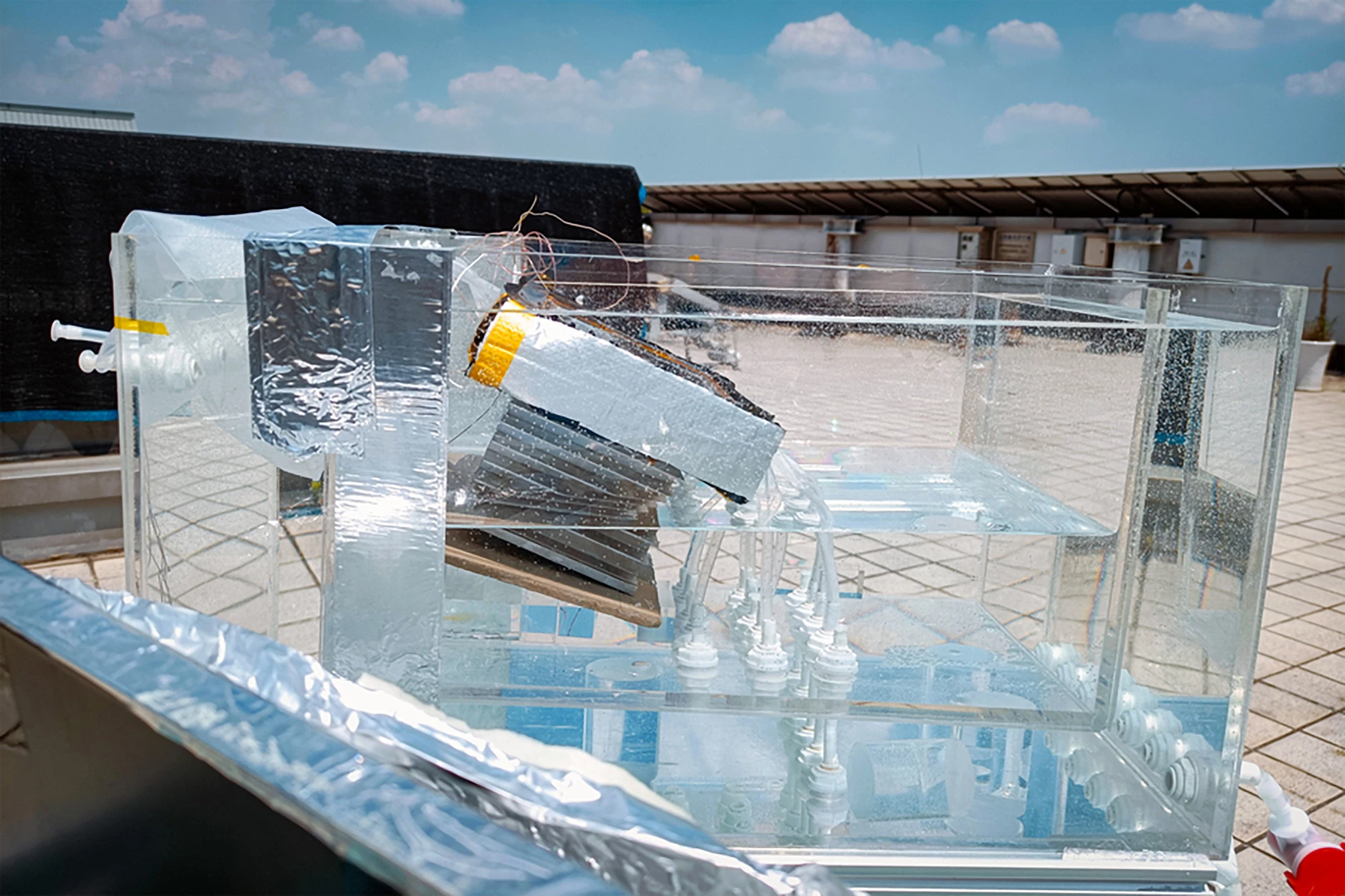Researchers have developed a new solar-powered desalination system that produces high amounts of drinkable water and uses a technique inspired by the ocean to avoid the problem of salt clogging. Scaled up, the system could provide enough drinking water to fulfil the daily needs of a small family.
There have been a number of solar-powered desalination systems developed in recent years to address the issue of maintaining a sustainable supply of freshwater. However, a frequent challenge is salt accumulation, which clogs the system and affects the water production rate.
To overcome this issue, researchers from MIT and Shanghai Jiao Tong University took inspiration from a natural phenomenon, namely, how deep-ocean currents are driven by differences in the water’s density, a process known as thermohaline circulation.
The researchers’ new system improves upon their previous design, a similar concept comprising multiple layers called ‘stages’. Each stage contained an evaporator and a condenser that used sunlight to passively separate salt from incoming water. While it efficiently used the sun’s energy to evaporate water, it became clogged after a few days due to salt accumulation. So, the researchers tried a version of thermohaline circulation as a way of mitigating salt build-up.
The new design features a single stage that looks like a thin box, topped with a dark material that absorbs heat from the Sun. Inside, the box is separated into an upper and lower section. Water flows through the upper half, where the ceiling is lined with an evaporator layer that uses solar heat to warm up and evaporate any water that comes into direct contact. The water vapor is funneled to the lower section, where a condenser layer air-cools the vapor into salt-free, drinkable water.
The entire box is tilted, which, in combination with the thermal energy from sunlight, induces the water to swirl as it flows through. This movement helps bring the water in contact with the upper evaporating layer while keeping the salt circulating and preventing it from settling and clogging.

“We introduce now an even more powerful convection that is similar to what we typically see in the ocean, at kilometer-long scales,” said Zhenyuan Xu, one of the study’s corresponding authors. “When seawater is exposed to air, sunlight drives the water to evaporate. Once water leaves the surface, salt remains. And the higher the salt concentration, the denser the liquid, and this heavier water wants to flow downward. By mimicking this kilometer-wide phenomena in [a] small box, we can take advantage of this feature to reject salt.”
The researchers found that their system produced fresh water at a range of salt concentrations, from natural seawater to water that was seven times saltier. They say that if the system was scaled up to the size of a small suitcase, it could produce 4 to 6 L (1.1 to 1.6 gal) of water per hour and last several years before requiring replacement parts.
Because of the system’s high water-production rate, high salt rejection, extended lifetime and the fact that it’s solar-powered and doesn’t require electricity, the researchers say that the overall cost of running the system would be cheaper than the cost of producing tap water in the US.
“We show that this device is capable of achieving a long lifetime,” said Yang Zhong, a co-author of the study. “That means that, for the first time, it is possible for drinking water produced by sunlight to be cheaper than tap water. This opens up the possibility for solar desalination to address real-world problems.”
The study was published in the journal Joule.
Source: MIT







